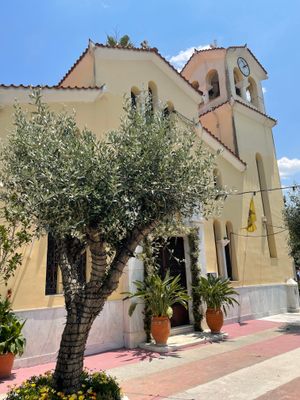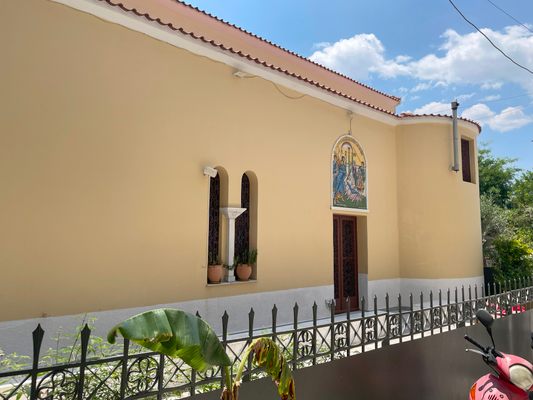About
Philip the Apostle was one of the Twelve Apostles of Jesus who preached in Greece, Syria, and Anatolia. While in Greece, he preached in the old Athenian neighborhood of Vlassarous, near the ancient agora. The area was considered sacred ground as it was the original site of an ancient Greek temple.
During the 9th century CE, a three-aisled, timber-roofed basilica was built over the original foundation of the ancient temple. This basilica stood until it was destroyed by the Ottomans in 1827 during the Greek War of Independence. A new church was built in 1833, with a major renovation in 1866. In 1912, the church was renamed “Agios Philippos Vlassarous” to honor the Apostle.
In 1961, it was determined that the old foundations of the ancient temple were unstable, so the church was dismantled, the foundations strengthened and the basilica was rebuilt, returning the building to its original shape. The iconostasis made in 1849 was saved and moved into the new church along with the Ephesian icons of the Virgin Mary from the nearby demolished church of Panagia Vlassarous.
Major renovations were completed after earthquakes in 1981 and 1999, and the church has generally remained unchanged with only minor modifications. The church currently houses a holy relic of St. Philip the Apostle, a holy relic of Saint Paraskevi, and numerous other artifacts.
Related Tags
Know Before You Go
The church is open most Sundays and sporadically throughout the rest of the week. The church celebrates a feast in honor of the St. Filippos annually on November 14 and on June 30 (Synaxis of the Holy, Glorious, and All-Praised Twelve Apostles).
Dress codes vary from church to church in Greek Orthodoxy. If you wish to enter the church, a proper show of respect to the church and its members is achieved by modest clothing and proper behavior.
For men, shorts, tank tops sleeveless shirts, and sandals or flip-flops are frowned upon. Women's shoulders should not be shown in church, so anything strapless or with thin straps should be avoided.
Skirts and dresses should, at a minimum, come below the knee. Some churches ask that no leg be shown. Feet should be kept on the ground when seated, as it is considered insulting for the bottoms of feet to face holy images.
Published
March 8, 2024











































